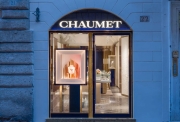The great American bastion to consumerism known ubiquitously as “The Mall” is not taking the proverbial standing eight count, contrary to various exaggerated media reports.
Much ink has been spilled of late on this “Death of Malls” topic, with each being more inflammatory than the next. Let’s face it, it’s an easy story to write: Find a struggling or defunct mall, write a story making generalizations linking it to all malls, play up the “nostalgia” factor, rinse and repeat.But that narrative belies the true nature of what is occurring in the industry and tests the limits of the post hoc ergo propter hoc fallacy (the idea that sequence proves cause). It would go something like this: e-commerce is born, mall X dies. And, therefore, all malls will die.

Now the “e-commerce is born” statement is just one of the many starting points that these articles like to assert. These statements appear to give gravitas to the overall argument that yes, e-commerce was, in fact, created and, therefore, the rest has to be true, right? The fallacy, however, can be found in the sequencing. E-commerce did not necessarily lead to the demise of mall X and, therefore, won’t lead to the demise of malls in general – no more so than a rooster crowing just before sunrise causes the sun to come up. Whatever the initial infallible statement is, the “proof” is always presented as a case study of a singular mall that has fallen on hard times.
More often than not, the truth is that we are looking at an economics or demographics story about an economically depressed area that can no longer support large-format retail due to a lack of job and/or wage creation, or a significant decrease in total population. It’s not that e-commerce is taking over or that consumers don’t find the mall “cool” anymore – it’s that they don’t have the means to spend on discretionary purchases.
However, that’s not a story that produces the kind of headline that drives clicks or sells papers. So we end up with a “malls are dying” story that profits on readers nostalgia of their bygone youth. The story writers, long past the days where they could hang-out in malls for hours on end posit that today’s youth is all about technology and online interaction – they would never spend time in the mall, right? Of course, does anyone bother to ask today’s millennial shopper about their purchasing preferences? Not often. The fact is today’s teens are hanging out (and shopping) at their local mall. Teen Vogue released a study over the holidays that found nearly two-thirds of teens conducted their holiday shopping at physical stores. According to Publisher Jason Wagenheim, “For the Millennial shopper—especially the 16- to 26-year-old segment—the mall remains the most important part of the overall omni-channel shopping story.”
Sometimes, the story is that a new or better mall or shopping center moved into the market and has rendered an old property obsolete. Sometimes, it’s an economics or poor business practices story on the part of the property owner. He or she either refuses to commit more capital to the project to make necessary improvements, or they simply can’t do so. At the end of the day, though, we should be talking about a unique story on a unique property – not a commentary on an overall industry or format type.
Frankly, 90% of malls in the United States are very healthy. If you choose to look at the bottom 10% of any industry, I’m sure you’d find weakness. We live in a capitalist society – which means there will always be winners and losers – but insisting that the bottom 10% is indicative of an entire industry is irresponsible at best.
But, the numbers speak loudest of all. Mall occupancy stands at 94% nationally, which is two percentage points higher than total shopping center occupancy. Net Operating Income, or NOI, which is one of the truest measures of a property’s success, increased by 17.5% at U.S. malls in 2014 – the strongest annual gain recorded by the series – and mall REITs (Real Estate Investment Trusts) were the strongest performing in the retail sector, delivering returns of almost 33%! And by the way, U.S. REITs overall nearly doubled the return of the S&P 500. Check out this infographic for more stats.
 As for the speculative position in some reports that malls will never reach the numbers of yesteryear due to complacency couldn’t be further from the truth. With the advent of omni-channel retailing and consumers who know what they want before they step foot in a store, the mall has evolved into an experience-driven destination. Sure, the mall is still a distribution channel for goods, but not to the extent that it was in the ‘70s and ‘80s.
As for the speculative position in some reports that malls will never reach the numbers of yesteryear due to complacency couldn’t be further from the truth. With the advent of omni-channel retailing and consumers who know what they want before they step foot in a store, the mall has evolved into an experience-driven destination. Sure, the mall is still a distribution channel for goods, but not to the extent that it was in the ‘70s and ‘80s.Malls have placed a greater focus on adding dining and entertainment options to the tenant mix, creating a unique experience and consumer destination that can’t be duplicated. The mall has evolved to the point that showing pictures of an abandoned mall and suggesting all malls will follow suit would be akin to showing a picture of a rusted-out Model-T and predicting the death of the automobile. The mall of tomorrow will look nothing like the malls we all grew up with, that’s for sure. And that should be celebrated, not lambasted.
12 MARCH 2015, USA
Source:
Jesse Tron, ICSC

 Boohoo expands online presence with new marketplace for fashion
Boohoo expands online presence with new marketplace for fashion Victoria's Secret expands presence in Melbourne
Victoria's Secret expands presence in Melbourne Inditex's Bershka set to enter indian market with Mumbai store
Inditex's Bershka set to enter indian market with Mumbai store Ross stores expands across the U.S. with 24 new locations
Ross stores expands across the U.S. with 24 new locations Chaumet opens doors to debut boutique in Italy
Chaumet opens doors to debut boutique in Italy Birkenstock is launching first store in France
Birkenstock is launching first store in France Salomon elevates brand presence with new Paris flagships
Salomon elevates brand presence with new Paris flagships  Amiri expands presence in California
Amiri expands presence in California  Crocs expands its presence in India with Apparel Group
Crocs expands its presence in India with Apparel Group  Best Buy Canada to expand presence with 167 small-format locations
Best Buy Canada to expand presence with 167 small-format locations  Arket expands into Italy with Milan flagship
Arket expands into Italy with Milan flagship